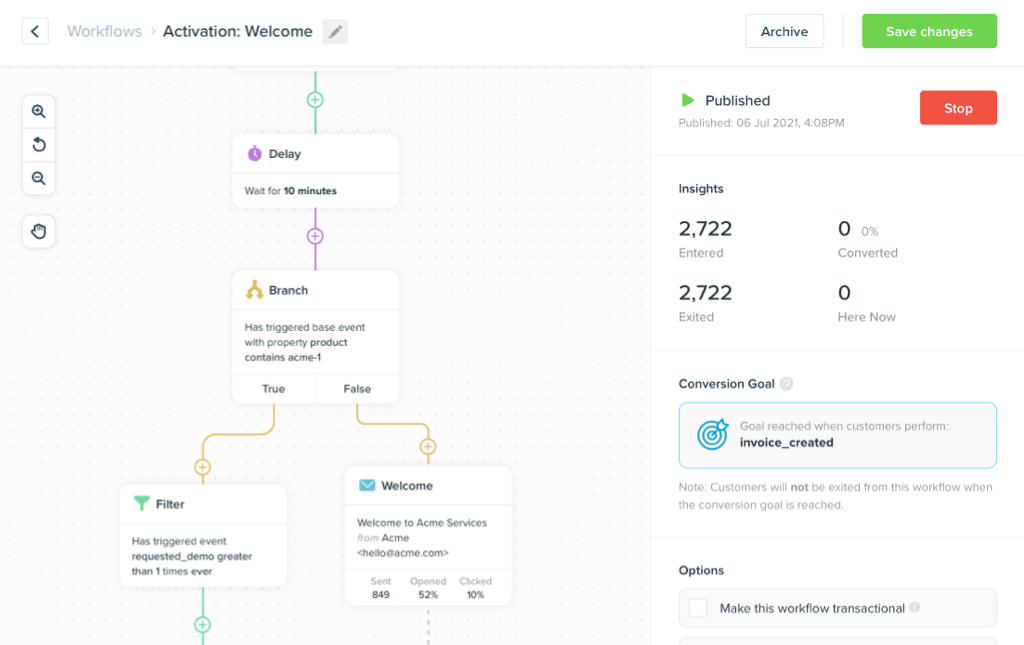- All Posts
- /
- Why Domain Warm-Up Matters (And Why You Shouldn’t Skip It)
Why Domain Warm-Up Matters (And Why You Shouldn’t Skip It)
Messaging and Automation-
 Rae Mack
Rae Mack
-
Updated:Posted:
On this page
If you’ve spent a year mastering the fine art of couch surfing 🥔 and suddenly decide to run a marathon, your body is going to protest in ways you didn’t think were possible. You’ll likely wake up feeling like you’ve been hit by a truck and reconsider every choice that led you there. Email domains work the same way. If you suddenly start blasting out thousands of emails from a fresh domain, inbox providers will treat you like a dodgy spammer, and your emails will be about as welcome as a telemarketer at dinner time.
That’s where domain warm-up comes in. It’s the email world’s version of stretching—essential if you don’t want to pull a muscle (or in this case, drop a bomb on your sending reputation). Here’s why it matters and how to do it right.

The Reputation Game: Why Warm-Up is Non-Negotiable
Email providers like Gmail, Outlook, and Yahoo are suspicious by nature (looking at you, Microsoft 👀 —who would probably mark a "happy birthday" email from your grandma as "potentially malicious content."). They rely on algorithms to decide whether your emails belong in the inbox, spam folder, or straight in the bin. A brand-new domain suddenly pumping out a high volume of emails is a major red flag.
Domain warm-up helps you build a positive sending reputation by gradually increasing your email volume over time. This shows email providers that you’re legit, not a spam bot on a rampage. Without it, your emails could end up in purgatory🔥 (aka the spam folder), never to be seen by actual humans.
Who Needs Domain Warm-Up the Most?
Domain warm-up is crucial for anyone sending bulk emails, but some businesses absolutely can’t afford to skip it. 📣 If you fall into one of these categories, pay extra attention:
– Companies rebranding or switching domains – If you’re moving to a new domain, inbox providers see you as a stranger. Without warming up, your emails might get sidelined before they ever reach your audience.
– Startups launching email campaigns – New businesses with fresh domains have zero sending history. Warming up is the only way to prove you’re not a spammer.
– Brands recovering from deliverability issues – If your previous sending habits got you into hot water, warm-up helps rebuild trust and get you back in good standing.
– Businesses scaling email volume quickly – Going from sending a few hundred to tens of thousands of emails overnight? Inbox providers will raise an eyebrow unless you ease into it.
How Domain Warm-Up Works (and How to Do It Right)
Warming up a domain isn’t complicated, but it does require patience. Here’s the basic process:
1. Start Small – Begin by sending to a small clean list of your most engaged recipients.
2. Gradually Increase Volume – Slowly ramp up your sending volume over several weeks, sending consistently, avoiding large breaks of more than a week. The timeline depends on your goals and the size of your list, but rushing this will undo all your good work.
3. Monitor Engagement – Keep an eye on open rates, click rates, and bounce rates. But don’t just look at any opens—focus on real engagement. Super low opens, even bot opens? You might already be going to spam. Super high bot clicks? Time to make a few adjustments before inbox providers start questioning your legitimacy. High engagement? You’re on the right track. High spam complaints? Time to reassess, scale back a bit, and act quickly.
4. Authenticate Everything – Make sure your SPF, DKIM, and DMARC records are properly set up. Email providers love security, and skipping authentication is like expecting leg room on a RyanAir flight – prepare to be let down.
5. Avoid Bad Sending Habits – Sending to un-engaged recipients, getting too many bounces, or hitting spam traps will tank your reputation. I know I say this a lot, but seriously – if you don’t keep your list clean and your content relevant, don’t be surprised when inbox providers start ghosting you.👻
Domain Warm-Up Scenarios: Understanding Your Starting Point
Not all domain warm-up scenarios are the same. The combination of your domain and IP reputation determines how tough your warm-up journey will be.
– New domain, established healthy IP – If you’re using a reputable email provider with a well-established sending IP, you have a head start. The warm-up process will still be necessary, but inbox providers already trust the IP, making the transition smoother.
– New domain, new IP – This is the toughest starting point. With no sending history, inbox providers have zero reason to trust you. You’ll need to be extra cautious, starting with an extremely low volume and increasing at a snail’s 🐌 pace to build credibility. The Support Team at Vero can help tailor a warm-up schedule that fits your needs.
The Long Game: Why Warm-Up is an Investment
A properly warmed-up domain builds trust with inbox providers, meaning better deliverability, higher engagement, and ultimately more success for your email campaigns.

It’s not just about getting emails into inboxes—it’s about staying there. A poor warm-up can set you back weeks, while a thoughtful approach can put you ahead of the game. So take the time to do it right. Your emails (and your marketing results) will thank you for it.

